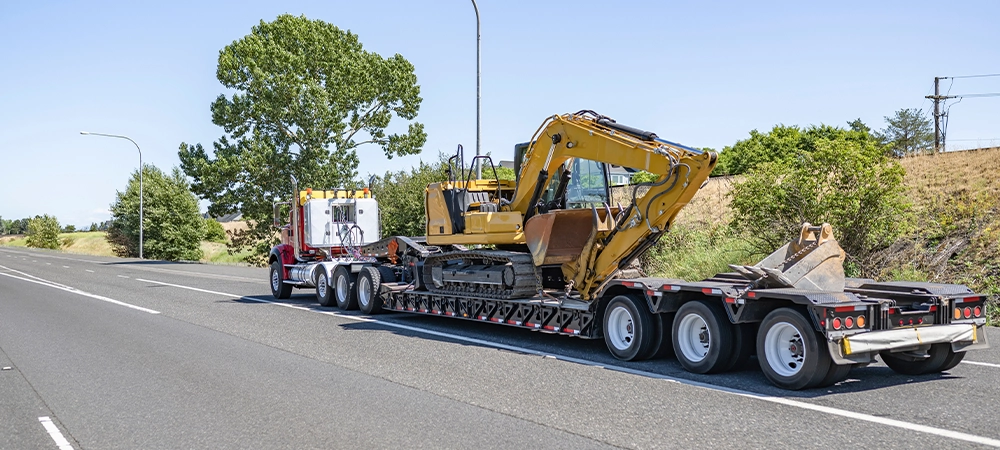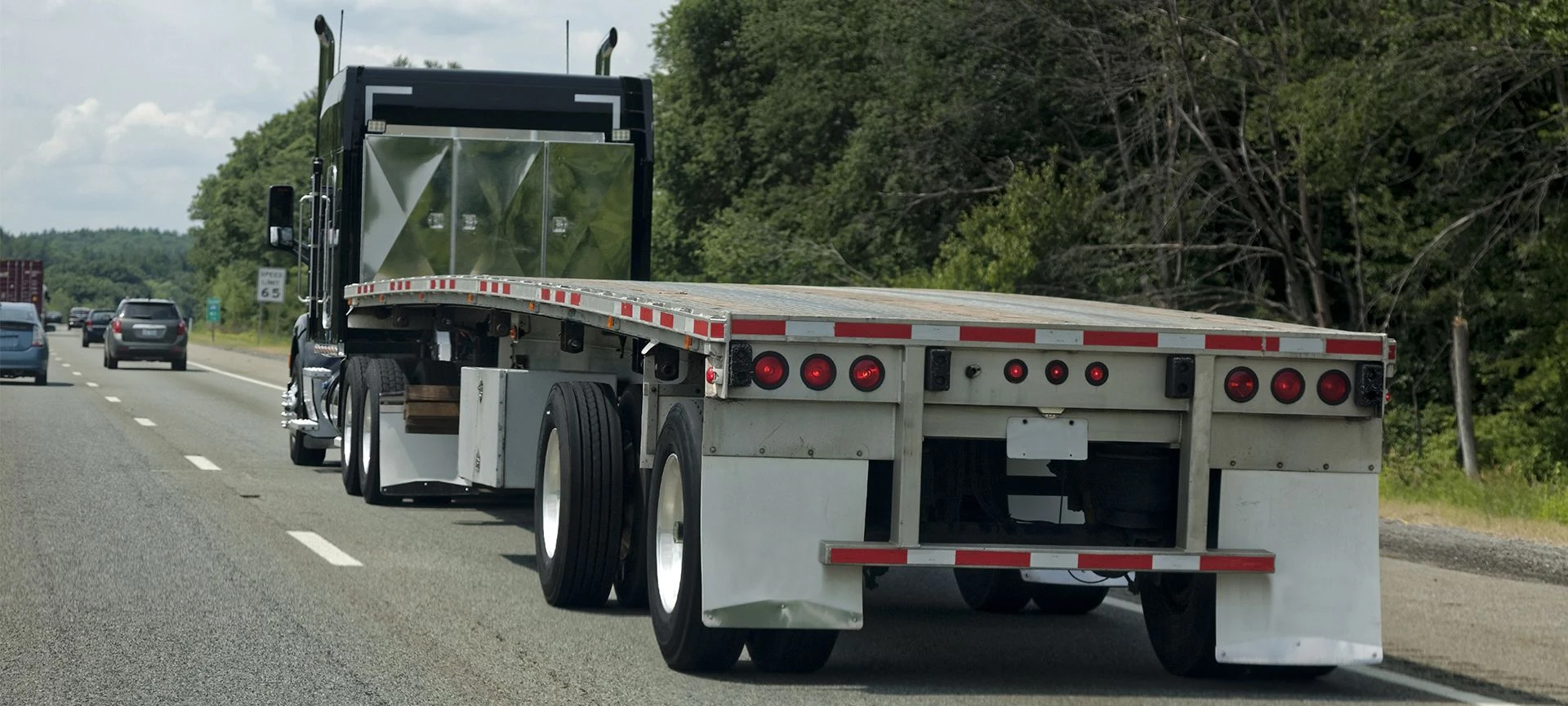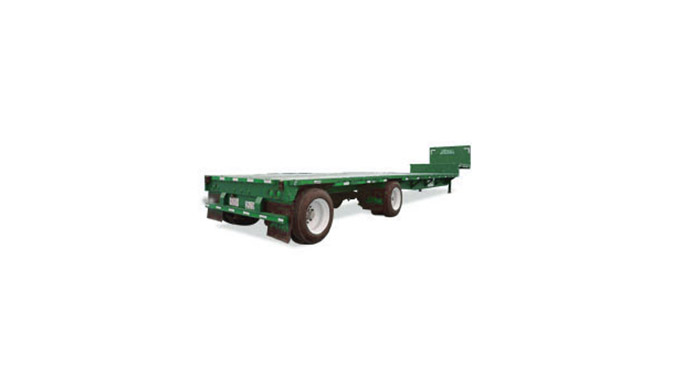When it comes to transporting heavy, oversized, or awkwardly shaped cargo, choosing the right trailer can make or break the job. Two of the most commonly used options are step deck and flatbed trailers. Though they may appear similar at first glance, their structural differences directly impact what they can carry and how efficiently they operate.
At RoadLINX, we help clients across North America determine the best freight solutions for their unique needs. Here’s a detailed look at the comparison between step deck vs. flatbed trailers to help you make the right choice for your next haul.
Related Article: How to Transport Heavy Equipment: Best Shipping Solutions
What Is a Flatbed Trailer?
A flatbed trailer is a standard open-deck trailer with a flat, level surface from front to back. It has no sides or roof, making it one of the most versatile trailer types available.
Key Features:
- Typically 48–50 feet long
- 8.5 feet wide
- Load height limit of 8 feet (102 inches)
- Great for loading from the top, sides, or rear
Best for:
- Palletized freight
- Construction materials
- Machinery
- Oversized but not overheight cargo
Pros:
- Easy loading/unloading from any angle
- Widely available and cost-effective
- Versatile for different load types
Cons:
- Height restrictions limit taller cargo
- No protection from the elements without tarping

What Is a Step Deck Trailer?
Also known as a drop deck trailer, a step deck trailer has two levels: an upper deck (closer to the front of the trailer) and a lower deck (closer to the rear), which allows for taller cargo to be hauled legally without requiring special permits.
Key Features:
- Upper deck height: ~5 feet
- Lower deck height: ~3.5 feet
- Load height limit of ~10 feet
- Ramps can be added for easier equipment loading
Best for:
- Tall or overheight machinery
- Crated industrial equipment
- Prefabricated structures
Pros:
- Carries taller cargo without extra permits
- Easier loading of wheeled equipment
- Safer centre of gravity for heavy loads
Cons:
- Slightly more expensive than flatbeds
- Less deck space on the upper level
Related Article: Dry Van Truck vs Reefer Truck: Which Is the Best Option?

Step Deck vs. Flatbed: Which One Should You Choose?
Choosing step deck vs. flatbed trailers depends on your specific freight dimensions and handling needs. Here are some key considerations:
1. Height of the Cargo
- If your load is taller than 8 feet, a step deck is usually the better option. It avoids the need for costly overheight permits.
- For cargo within height limits, a flatbed may suffice and be more economical.
2. Loading Requirements
- Need to load from the top with a crane? Both options work.
- Need to drive equipment onto the trailer? Step decks with ramps make it easier.
3. Weight Distribution
- Step decks offer a lower centre of gravity, which can be safer for heavy machinery.
- Flatbeds offer a single, continuous platform that’s ideal for uniformly sized cargo.
4. Availability and Budget
- Flatbeds are generally more common and slightly more affordable.
- Step decks are specialized and may come at a premium but offer greater flexibility.
Typical Loads for Each Trailer
Not all freight is created equal. And the type of trailer you choose should match the job. While both step deck and flatbed trailers are versatile, certain types of cargo are better suited to one over the other. Here’s how common loads break down for each option.
Flatbed Trailer Examples:
- Lumber
- Steel coils
- Concrete blocks
- Building materials
Step Deck Trailer Examples:
- Tractors and bulldozers
- Tall crates
- Wind turbine parts
- Pre-assembled building components
Cost Considerations
When comparing step deck vs. flatbed transport, cost plays a big role in decision-making. Generally, step deck trailer transport is more expensive, and for good reason.
Here’s why:
- Fewer Trailers Available: Step deck trailers are less common than standard flatbeds, which means availability is limited. Lower supply can drive up costs, especially during peak shipping seasons.
- Specialized Equipment Needs: Step decks often require special loading or unloading equipment, such as cranes, ramps, or forklifts with extended reach. These tools come with additional fees or coordination time.
- Higher Demand for Specialized Freight: Oversized or tall loads that can’t legally travel on a flatbed often require a step deck, increasing demand for these trailers. Carriers know this and often charge a premium.
That said, a step deck may actually lower your overall shipping cost in some situations. For example:
- Fewer Permits: If your load exceeds the legal height limit on a flatbed, you’ll need over-height permits and potentially a different route. A step deck often keeps your load within legal height limits, saving you money on permits and time on approvals.
- Avoiding Delays and Fines: Transporting an over-height load on the wrong trailer can lead to unexpected fines, enforcement stops, or shipment delays. A step deck keeps you compliant and on schedule.
- Improved Loading Efficiency: When docks or forklifts can’t accommodate standard flatbeds, a step deck’s design may allow easier access, reducing time and labour costs at pickup or delivery.
Bottom line: while step decks may cost more upfront, they could save you time, hassle, and extra charges in the long run, especially for tall or awkwardly shaped freight.
Related Article: Difference Between Dry Van Freight and Flatbeds

Secure the Right Equipment, Avoid the Wrong Costs
In the step deck vs. flatbed debate, there’s no universal winner—only the best trailer for the job at hand.
- Choose a flatbed when your cargo is standard height, easy to load from the sides or top, and doesn’t require special handling.
- Go with a step deck when your freight is tall, oversized, or when you need added flexibility for loading and unloading.
Height restrictions, permit requirements, accessibility, and overall logistics all factor into the decision. That’s where we come in.
At RoadLINX, we don’t guess, we assess. Our logistics team carefully evaluates your shipment’s size, weight, and destination to match it with the most cost-effective and compliant equipment. Whether it’s a straightforward flatbed haul or a complex oversized load, we provide the right trailer, the right permits, and the right support.
Need help deciding between step deck vs. flatbed for your next shipment? Contact RoadLINX today and let our freight experts guide you from quote to delivery.



